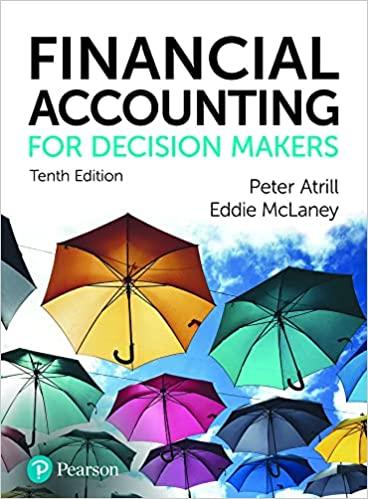Required: A number of terms and concepts from this chapter and a list of descriptions, definitions, and explanations appear below. For each term listed below (1 to 9), choose at least one corresponding item (a to k ). Note that a single terin may have more than one description, and a single description may be used more than once or not at all. A. Discounted cash flow method of capital budgeting B. Estimate of the average annual return on investment that a project will generate. C. Capital budgeting method that identifies the discount rate that generates a zero net present value. D. Decision that requires managers to evaluate potential capital investments to determine whether they meet a minimum criterion. E. Only capital budgeting method based on net income instead of cash flow. F. Ratio of the present value of future cash flows to the initial investment. G. Value that a cash flow that happens today will be worth at some point in the future. H. Concept recognizing that cash received today is more valuable than cash received in the future. 1. Decision that requires a manager to choose from a set of alternatives. J. How long it will take for a particular capital investment to pay for itself. K. Capital budgeting technique that compares the present value of the future cash flows for a project to its original investment. B. Estimate of the average annual return on investment that a project will gene C. Capital budgeting method that identifies the discount rate that generates a D. Decision that requires managers to evaluate potential capital investments to criterion. E. Only capital budgeting method based on net income instead of cash flow. F. Ratio of the present value of future cash flows to the initial investment. G. Value that a cash flow that happens today will be worth at some point in the H. Concept recognizing that cash received today is more valuable than cash re 1. Decision that requires a manager to choose from a set of alternatives. J. How long it will take for a particular capital investment to pay for itself. K. Capital budgeting technique that compares the present value of the future c investment. A. Discounted cash flow method of capital budgeting. B. Estimate of the average annual return on investment that a project will generate. C. Capital budgeting method that identifies the discount rate that generates a zero net present value. D. Decision that requires managers to evaluate potential capital investments to determine whether they meet a minimum criterion. E. Only capital budgeting method based on net income instead of cash flow. F. Ratio of the present value of future cash flows to the initial investment. 6. Value that a cash flow that happens today will be worth at some point in the future. H. Concept recognizing that cash received today is more valuable than cash recelved in the future. 1. Decision that requires a manager to choose from a set of alternatives. J. How long it will take for a particular capital investment to pay for itself. K. Capital budgeting technique that compares the present value of the future cash flows for a project to its original investment









